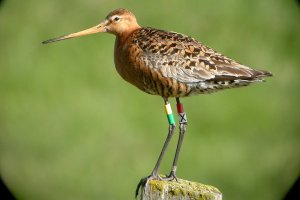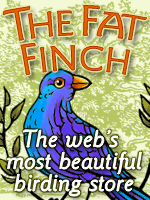From The Center for Biological Diversity | biologicaldiversity.org
SAN FRANCISCO— In response to decades-old listing petitions and a series of lawsuits by the Center for Biological Diversity, the U.S. Fish and Wildlife Service today designated four rare bird species from Colombia (the blue-billed curassow, brown-banded antpitta, Cauca guan and gorgeted wood-quail) and one Ecuadorian hummingbird species (Esmeraldas woodstar) as endangered under the U.S. Endangered Species Act.
“Protecting these vulnerable tropical birds under the Endangered Species Act will give them a better shot at survival and attract attention to the urgent need to protect their remaining forest homes,” said Jeff Miller, a Center conservation advocate. “Tropical deforestation is threatening to drive so many of the planet’s most amazing birds extinct.”
A campaign to protect scores of the world’s most imperiled bird species began in the 1980s, when worried ornithologists began submitting Endangered Species Act petitions to protect more than 70 international bird species. Although the Fish and Wildlife Service had determined by 1994 that most of the species warranted protection, the agency never responded to the listing petitions. After a quarter-century, legal protection had been provided for only a handful of the species, and at least five of the 73 had gone extinct.
The Center filed lawsuits in 2004 and 2006 that jump-started the foreign-species listing program. The Service then determined that more than 50 of the bird species warranted listing. So far 36 of the bird species have been protected as endangered or threatened.
Listing international species under the U.S. Endangered Species Act restricts buying and selling of the imperiled animals, increases conservation funding and attention, and can add scrutiny to development projects proposed by U.S. government and multilateral lending agencies — such as the World Bank — that would destroy or alter habitat.
Background
The blue-billed curassow (Crax alberti) is the world’s most threatened species of cracid, a family of beautiful crested game birds found primarily in Latin America. This large, mainly black bird is the only curassow with distinctive blue bill ornaments, earning the species its common name. Very little is known about this bird in the wild due to its rarity; while at one time its range stretched 41,000 square miles, it’s now restricted to only a fragmented, 806-square-mile forest area in northern Colombia. It has been severely hurt by a rapid increase in deforestation over the past decade through agriculture and other industries. About 98 percent to 99 percent of this amazing bird’s habitat has been lost, and there are thought to be fewer than 2,000 individuals left.
The brown-banded antpitta (Grallaria milleri), like other antpittas, is a secretive bird with a low population density and high habitat specificity — a nearly flightless, ground-dwelling species found only in the Neotropics. This antpitta, endemic to the central Andes of Colombia, has been severely harmed by a rapid increase in deforestation due to agriculture and human encroachment. In 1992 researchers considered it locally extinct, if not extinct throughout its range. Although it was rediscovered in 1994, there are thought to be only a few hundred brown-banded antpittas remaining in four isolated populations.
The Cauca guan (Penelope perspicax) is a rare forest bird found only on the west slopes of the west and central Andes of Colombia. This large, mainly brown-gray bird is similar in appearance to a turkey, thanks to its thin neck and small head with a dewlap — a flap of skin that hangs beneath the lower jaw or neck. The Cauca guan requires large territories for foraging, but today it’s relegated mainly to small patches of forest, since most of its preferred dry-forest habitat has been eliminated and is highly fragmented. The species’ range has been reduced by 95 percent since the 1950s as a result of agriculture production and human settlement. Historically, this magnificent bird was considered common; now it is thought that only 250 to 1,000 Cauca guans are in existence.
The gorgeted wood-quail (Odontophorus strophium) is a small, secretive, ground-dwelling bird endemic to montane subtropical forests on the west slope of the eastern Andes, in the Magdalena Valley of Colombia. The species has declined due to deforestation from logging, conversion of forests to agriculture, coca growing and drug eradication efforts using herbicides. Fewer than 500 of these ‘‘forest partridges’’ are now believed to remain, in fragmented habitats.
The Esmeraldas woodstar (Chaetocercus berlepschi) is a tiny, mysterious hummingbird with striking violet, green and white plumage, endemic to Ecuador. Little is known about this range-restricted, forest species, as it seems to disappear from known locations during nonbreeding months. Its preferred evergreen forest environment is one of the most threatened forest habitats in the Neotropics. The remaining habitat for the species has been reduced by 99 percent and is severely fragmented due to rapid deforestation as a result of logging and agriculture clearance. The Esmeraldas woodstar was thought to be extinct until it was rediscovered in 1990 — after not being sighted since 1912.
Read about the Center’s International Birds Initiative.
The Center for Biological Diversity is a national, nonprofit conservation organization with more than 625,000 members and online activists dedicated to the protection of endangered species and wild places.
 This bird may be to coffee what pigs are to truffles. The “Jacu” bird is the name given to a family of birds—the Guans. Found in the forests of Latin America, there are 15 species. It turns out that these birds have quite the “nose” for good coffee. They eat only the very best of coffee beans and because their diet is vegetarian, their poop is not contaminated by animal proteins. Organic coffee growers are paying workers extra to find and extract the beans from the Jacu’s poop. The beans are then cleaned and peeled by hand.
This bird may be to coffee what pigs are to truffles. The “Jacu” bird is the name given to a family of birds—the Guans. Found in the forests of Latin America, there are 15 species. It turns out that these birds have quite the “nose” for good coffee. They eat only the very best of coffee beans and because their diet is vegetarian, their poop is not contaminated by animal proteins. Organic coffee growers are paying workers extra to find and extract the beans from the Jacu’s poop. The beans are then cleaned and peeled by hand.





